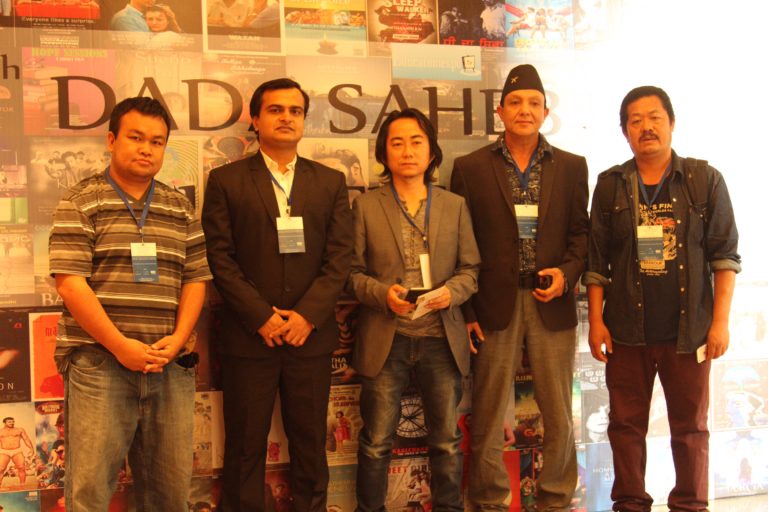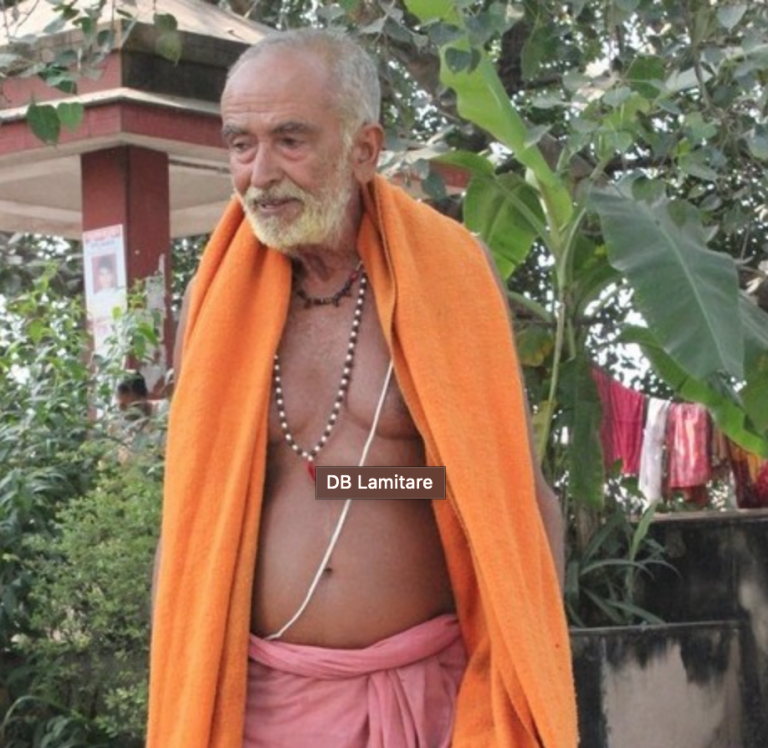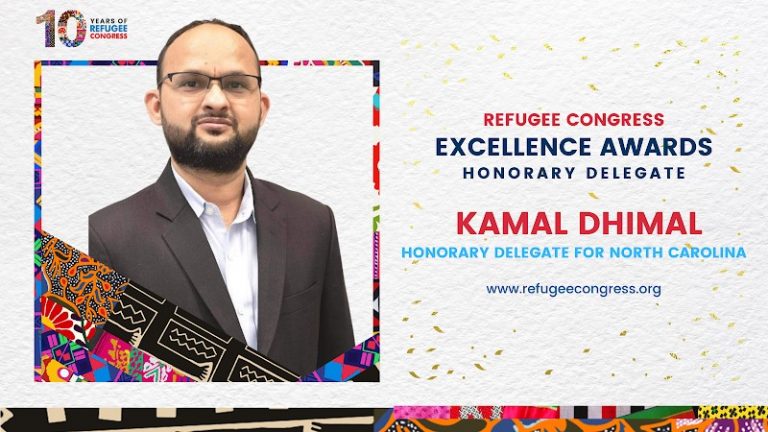 डा.लक्ष्मीनारायण ढकाल
केन्टकी, अमेरिका
डा.लक्ष्मीनारायण ढकाल
केन्टकी, अमेरिका
संसारमा भाषा वैज्ञानिकहरुका मतमा लगभग ३००० भाषाहरु बोलिन्छन् । यी भाषाहरु कुनै पूर्ण रूपमा, कुनै आंशिक रूपमा त कुनै लिखित रूपमा मात्र पनि अस्तित्वमा छन् भने कतिपय भाषाहरु विलयपछि पुन: उदय भएर वर्तमानमा एक राजभाषाका रूपमा प्रतिष्ठित भएको पाइन्छ ।
यहाँ वर्तमानमा हामी भूटानी मूलका नेपाली भाषीहरुको पुनर्वासपछि आउँदै गरेको भाषिक सङ्कटले मलाई जेरुसेलम पुर्यायो । पुनर्वासपछि जुन जुन देशमा हामी स्थापित हुन पुग्यौं या हुँदैछौं स्थानीय भाषा संस्कृतिको प्रभाव र भाषा अध्ययन अध्यापनको कुनै ठोस प्रबन्ध हुन नसेकाले हाम्रो मातृभाषा लोप हुने दिशातिर द्रुतगतिले अघि बढ्दैछ । यद्यपि धेरैजसो मस्तिष्कहरुमा यस भाषालाई जोगाउन प्रयास गर्नु पर्दछ भन्ने सोच भएता पनि, केही स्थानहरुमा छिटफुट साप्ताहिक रूपमा भाषाकक्षाहरु आयोजन हुन थालेका भए पनि समग्रमा हेर्दा अनेक समस्या र जनचासोको कमीका कारणले पुनर्वास आरम्भ भएका सातौँ वर्ष वितिसक्दा पनि हामी सङ्गठित रूपमा यस दिशामा अघि बढ्न नसक्नु दुर्भाग्य हो | फलत: भाषा-संस्कृति द्रुतगतिले अन्धकारका सतहतिर लम्किँदैछ । यस परिस्थितिमा मेरो व्यथित मनले दुनियाँका मानचित्रबाट लोप भैसकेको भाषालाई मात्र एक व्यक्तिका महान् संकल्पले संसारमा पुनर्स्थापित गराई राजभाषाका रूपमा प्रतिष्ठित गराउन सफल भएको इतिहासलाई चर्चा गर्न समसामयिक र अत्यावश्यक लाग्यो ता कि यो लेख पढेर जनचेतनाको सञ्चार हुन सकोस् ।
विश्व मानचित्रमा इजरायल देशसँग हामी सबै परिचित नै छौँ । यो द्वितीय विश्वयुद्धपछि १९४८ मा विश्व भरमा फैलिएका यहूदिहरुलाई पुनर्वास गराउनका निम्ति निर्मित देश हो। आज यस देशको मुख्य राजभाषा हिब्रू छ र अन्य सहयोगी भाषाका रूपमा अङ्ग्रेजी एवं अरबी भाषा प्रयोग भएको पाइन्छ । अङ्ग्रेजी र अरबी भाषा आज विश्वका अनेक देशहरूमा बोलिन्छन् । हिब्रू भाषा आरम्भमा यहूदीहरुको बोलचालको भाषा थियो तर अन्य भाषी शासकहरुका आक्रमणले यो भाषा दुनियाका मानचित्रबाट एकपटक लुप्त भैसकेको थ्यो । लगभग २००० वर्षजति ग्रन्थमा मात्र सीमित भएर रहेको भएता पनि यो भाषा, भाषा प्रेमी तथा बलिदानी सपूतहरुका सत्प्रयासका कारण आज जीवित मात्र नभएर पुन: एक राजभाषाका रूपमा प्रतिष्ठित भएकोछ । यो इतिहास दर्दनाक अनि कारुणिक मात्र नभएर भाषाप्रेमीहरुका या भाषा रोगीहरुका लागि प्रेरणादायी त छँदैछ, लिन सके एक अमोघऔषधी पनि हुनसक्ने अनुमान मेरो छ । भाषा पुनर्जागरणको यो महाअभियान भूटानी डायस्पोरामा अत्यन्त सान्दर्भिक र समसामयिक पनि देखिन्छ ।
ज्ञातव्य के छ भने यस महान् कार्यको श्रेय मात्र एक व्यक्तिलाई जान्छ । हो मात्र एक व्यक्तिको सत्संकल्प, ध्येयसाधना र कठोर परिश्रमको प्रतिफल हो हिब्रु भाषाको पुनर्प्रतिष्ठापन इजरायलमा । यदि व्यक्तिले आफ्नो लक्ष्यलाई गति दिन निरन्तर अभ्यास गरेमा संसारका कुनै कार्यमा लक्ष्य सन्धान गर्न असम्भव छैन, यदि त्यस व्यक्तिमा अनुसाशनात्मक स्वाभिमानका साथ सत्संकल्प र अदम्य इच्छाशक्ति छ भने । त्यस्तो महान् इच्छाशक्ति भएका र कठोर साधाना गर्ने संकल्प लिएर निरन्तर लागिपर्ने व्यक्ति वर्तमान इजरायलका यहूदी जातिका हिब्रूभाषी व्यक्ति थिए “एलिज़र बेन यहूदा”। यो नाम आज दुनियामा भाषाका इतिहासमा स्वर्ण अक्षरले लेखिएको छ । यहाँ हिब्रू भाषा लोप भएपछि पुन: यसको कसरी उदय भयो र त्यति महत्वपूर्ण भाषाका रुपमा कसरी स्थापित भयो भन्ने बारे सङ्क्षिप्त प्रस्तुति जरुरी छ । त्यसैले सर्वप्रथम यस भाषाको परिचयलाई केलाउँन सान्दर्भिक हुनेछ ।
हिब्रु भाषा र संस्कृत भाषाको तुलनात्मक अध्ययन गर्दा विकास विलय र पुन: उदयका धाराप्रवाह शृंखलाहरु फेला पर्दछन् । संस्कृत भाषा भारतमा वैदिक कालदेखि लिएर विक्रमको प्रथम शताब्दीसम्म बोलचालको माध्यम भएको पाइन्छ । राजा भोजले आफ्नो सारथीसँग गरेको संवादले त्यतिबेलासम्म संस्कृत भाषा सामान्य बोलचालको भाषा रहेको किम्बदन्तीहरु संस्कृत साहित्य तथा इतिहासमा प्रशस्त मात्रामा पाइन्छन् । यद्यपि गौतम बुद्धले आफ्नो धर्मोपदेश पालि भाषामा दिएकाले, पालिभाषाले विकाश पाइसकेको भएता पनि संस्कृत भाषा पुस्तकीय लेखनको भाषा त छँदैथ्यो, बोलचालका रूपमा पनि कतै कतै प्रचलित नै थ्यो । बिस्तारै भारतमा अन्य मत-मतावलम्बी र अन्य भाषी व्यक्तिहरूको आधिपत्य हुन थालेपछि पूर्ण रुपमा बोलचालबाट संस्कृत पुस्तकमा पुगेर थन्कियो । अन्य भषामा अनुवाद गरेर संस्कृतलाई पढाउन थालियो भने लगभग दुई हजार वर्षपछि आजभन्दा ३५ वर्ष पूर्वदेखि भाषाका लागि समर्पित संस्था “संस्कृत भारती”का अथक प्रयासले पुन: संस्कृत भाषा बोलचालका रूपमा पुनर्स्थापित हुँदै वर्तमानमा धेरै व्यक्तिहरूको मातृभाषा बन्न थालेकोछ । आज भारतमा धेरै गाउँहरू छन् जसलाई “संस्कृत ग्राम” भनेर चिनिने गरिन्छ, जहाँ मात्र संस्कृत बोलिन्छ । यस अभियानको प्रत्यक्षदर्शी मात्र नभएर केही समयसम्म यस अभियानको सहयात्रीका रूपमा आफू पनि संलग्न भएको हुँदा यस पंक्तिकारले भाषा सम्बन्धित धेर थोर अनुभव बटुल्ने अवसर पाएको थियो । यस अभियानको पाठ्यक्रम मात्र दश दिनमा व्यक्तिलाई सामान्य संस्कृत बोल्न समर्थ गराउन सक्षम छ । म पनि एक शिक्षक कार्यकर्ता हुने अवसर पाएकाले र त्यस आन्दोलनको प्रत्यक्ष अनुभव थाहा भएकाले भाषाको मर्म र व्यथाले मेरो मन व्यथित हुनु अस्वाभाविक होइन ।
मलाई आज हजारौँ भारतीय बन्धुहरुसंगका ती संस्मरणहरु याद आउँछन् जतिवेला विद्यार्थी छँदा-छँदै पनि म उनीहरूको भाषा शिक्षक बन्ने सुन्दर अवसर पाएको थिएँ । मबाट संस्कृत विषय होइन, भाषा पढेका कम्तीमा पनि दश हजार विद्यार्थीहरू होलान् जो कतिपय आज पनि मसँग संस्कृतमा नै धारा-प्रवाह वार्तालाप गर्दछन् भने कति छिटपुटरुपमा त कति समयको प्रवाहसँगै बिलाए । मैँले यहाँ मेरो आफ्नो गुणगान गर्न कदापि खोजेको होइन, अपितु अनुभव साट्ने प्रयास गरेको हुँ । भाषिक आन्दोलनको एक प्रत्यक्ष सहभागी भएको हुनाले र यहाँ प्रासांगीक देखिएको हुनाने मात्र उल्लेख गरेको हुँ । अर्को कटुसत्य वर्तमानमा मेरो आफ्नै मातृभाषा मेरै छोरा-छोरीहरुबाट टाढिएको अवस्था आउँछ भन्ने कल्पना त्यतिबेला मैँले पनि गरेको थिइन, जुन व्यथाले आज हामी लाखौँ व्यक्ति ग्रसित छौँ । यति हुँदा हुँदै पनि सामाजिक रूपमा भाषा कक्षाहरु सञ्चालन गर्न या समयदान दिन नसक्नु मेरो आफ्नै बाध्यता छ । मलाई लाग्छ मेरो बाध्यता र तपाईँको बाध्यता समान प्रकृतिको नहुन पनि सक्छ तर यी बाध्यताहरुलाई चिर्न हामीले एकजुट सामूहिक प्रयास नगरी अर्को विकल्प छैन ।
हिब्रु भाषाको पनि कहानी यस्तै नै छ जस्तो संस्कृतको छ । अनि अब नेपाली इतर भाषी क्षेत्रहरूमा नेपाली भाषाको पनि अवस्था त्यस्तै हुँदैन होला भन्न सकिँदैन जुन अवस्था उत्तर वैदिक कालको संस्कृत भाषाको र इसा पूर्व ५५८ देखि सन् १८५८ सम्म हिब्रु भाषाको अवस्था रहेको थियो । लगभग इसा पूर्व ५८६ देखि पछि त्यो भूभागमा हिब्रू भाषा पनि विभिन्न कारणहरूले गर्दा मात्र पुस्तकीय भाषामा सीमित हुन पुगेको थियो । यो भाषा लुप्त हुनुमा मुख्य कारण तात्कालीन राजनीति नै थियो । त्यतिबेला इजरायलमा फारस (वर्तमान ईरान) साम्राज्यको विस्तार हुँदै जाँदैथ्यो । इसा पूर्व छैटौँ शताब्दीमा ईरानी आर्य सम्राट क्रूश (साइरस) को शासन मध्य एसिया देखि लिएर भूमध्य सागरसम्म फैलिसकेको थियो । यस क्रममा समयको धारासँगै भारतबाट प्रसारित वैदिक शासन प्रणालीलाई मुस्लिमीकरण पछि इस्लामिक क्रान्तिका नाममा त्याहाँको व्यवस्थाले अन्य भाषाहरुलाई बोलचालमा ल्याउन थालेको पाइन्छ । क्रूशपछि उसको छोरो कम्बीससले यस साम्राज्यको सीमालाई मिस्र, थ्रास(वर्तमान बुल्गारिया) आदि स्थानहरुलाई आफ्ना अधीनमा ल्याएको थियो । यस साम्राज्यमा बसोबास गर्ने यहूदीहरुलाई जबर्जस्ती ‘आर्मैक’ नामक भाषा बोल्न बाध्य गराइयो, जसले गर्दा हिब्रू भाषा जन बोलचालबाट पृष्ठभूमिमा पुग्यो । फलत: यो भाषा बोलीचालीदेखि हराउँदै एउटा कथाका रूपमा इतिहास मात्र हुन पुग्यो ।
हिब्रू भाषा माथि एउटा अर्को ठुलो प्रहार के भयो भने ‘लेबिनान”का शासक नाबुचाडनज़र”को जेरुसेलममा आक्रमण पश्चात् यहूदीहरूमाथि विभिन्न उत्पीडनहरु हुन थालेपछि यहूदीहरु शरणार्थी भएर विश्वका विभिन्न स्थानहरुमा पलायन हुँदै बसोबास गर्नथालेका हुन् । जस्ता प्रकारले आज हामी भूटान सरकारका दमनबाट उत्पन्न शरणार्थी समस्याबाट विश्वभरि छरिन पुग्यौं त्यस्तै काहानी यिनीहरूको छ । अब यहूदीहरू पनि डायस्पोराका महाजालमा फसिसकेका हुँनाले उनीहरूको शैक्षिक, धार्मिक, सामाजिक, भाषिक र साहित्यिक एकता र अखंड़ताका सम्पूर्ण आधारहरु पनि छिन्न-भिन्न हुन पुगे । उनीहरू जहाँ-जहाँ पुगे समयका धारले त्यँहिको भाषा नसिकी जीवन निर्वाह गर्न संभव भएन । त्यसैले उनीहरू स्थानीय भाषालाई अपनाउन बाध्य हुँदैगए भने हिब्रू भषा मात्र अब बाइबलको भाषा भएर रह्यो । ईशाले जन्म लिएको स्थान जेरुसेलम पनि कालान्तरमा नष्ट भएपछि त्यहाँबाट बचेका यहूदीहरू पनि बाहिरिन थाले । अब यहूदिहरुको आफ्नो भाषासहित आफ्नो स्थान पनि समाप्त भयो । परिणाम स्वरुप विश्वभरि फैलिएका यहूदीहरुको कुनै निश्चित भाषा रहेन, तथापि धेरैजसोले ‘आरमाइक’ भाषालाई अपनाइएको देखिन्छ भने जो यहूदीहरू मध्यपूर्वमा पुगेर बसेका थिए उनीहरूले अरबी भाषालाई अंगालेको पाइन्छ । त्यसकारणले गर्दा हिब्रु भाषा अब विस्मृतिका गर्तमा पुगेर थान्को लाग्यो ।
इशा पूर्व छैटौँ शताब्दीमा उता भारतमा बुद्धको दीक्षा फैलँदै जाँदा पालि भाषाले विकास पायो । संस्कृतको बोलचाल रूपलाई विथोल्न पालि भाषा सफल भयो भने यता यहूदीहरूमाथि भएका विभिन्न आक्रमणले हिब्रुको अस्तित्वलाई समाप्त गरिदियो । विभिन्न कालखण्डमा विभिन्न स्थानहरुमा जाति, धर्म, भषा र शासनमा उथल-पुथल नआएको होइन । यी सबै परिवर्तनका मूलमा कारण राजनैतिक स्वार्थ नै रहेको देखिन्छ भने त्यही राजनैतिक व्यवस्थालाई चिर्न अनि अन्याय विरुद्ध लड्न र आफ्नो जीवन बलिदान दिने व्यक्तित्वहरुको उदय पनि त्यसै बीचबाट हुनेगरेको पाइन्छ । प्रकृतिको यो निर्धारित नियम आफ्ना कार्यमा सर्वथा गतिशील छ । हिब्रू भषाको इतिहास र सङ्घर्ष महाभारतभन्दा कुनै कमीको छैन भने यसको गाथा रामायणभन्दा कम कारुणिक छैन ।
यहूदीहरुको लुप्त मातृभाषा हिब्रु अब न त कुनै मातृ भषानै थियो नत यसको कुनै व्याकरण नै शेष रहेको थियो । शेष थियो त मात्र इतिहास शेष थियो । तर यस अवस्थामा ईशापूर्व छैटौँ शताब्दीदेखि लिएर उन्नाइसौं शताब्दी सम्मको काल खण्डलाई उदीर्ण गर्दै सन् १८५८ मा यहूदी डायस्पोरामा नै जेरुसेलमबाट छरिएर विश्वभरि बसोवास गर्न पुगेका यहूदी परिवारबीचमा रुस पुगेर बस्दै गरेका एक ग्रामीण परिवारमा एक क्रान्तिवीरले जन्म लिए । आधुनिक हिब्रु भाषाका जनकका रूपमा प्रख्यात ती वीरको नाम हो ‘एलिज़र बेन यहूदा” ।
एलिजर भाषिक उत्थानको विश्व इतिहासमा एउटा यस्तो नाम हो जुन नामले त्याग, समर्पण, लगनशीलता, निस्वार्थता, बलिदान, सामाजिक अखण्डता, जीवन-अनुशासनप्रतिको प्रेरणा र शिक्षाको दर्बिलो ठेली बोकेको छ । यिनै महापुरुषको अथक प्रयासले आज हजारौँ वर्षपछि पुन: हिब्रु भाषा करोडौं यहूदीहरुको पुन: मातृभाषा बन्न सफल भएको छ । मात्र एक व्यक्तिले गरेको सङ्घर्षको प्रतिफलका कारण आज यहूदीहरु इजरायलमा स्वाभिमानका साथ आफ्नो मातृभाषा हिब्रुलाई राष्ट्रभाषाका रूपमा प्रयोग गरिरहेका छन् ।
कसरी गरे त एलिजर बेनयहूदाले यस सङ्घर्षको शंखनाद ? कसरी सम्भव भयो विना व्याकरणको भाषाको पुनरुत्थान ? यस्ता प्रश्नहरू तपाईका मनमा उठिरहेका होलान् । त्यसैले अब हामी त्यस भाषिक माहायज्ञको संकल्पना तथा उनीद्वारा दिएका प्रत्येक आहुतिहरुको चर्चा यहाँ गरौँ ।
वस्तुत: जुन समयमा (१८५७ मा) एलिजरको जन्म भयो, त्यति बेला रुसमा सामन्ती व्यवस्था भएकाले अल्पसंख्यक रहेका यहूदी लगायत अन्य जातिका नागरिकमाथि त्यहाँको तात्कालीन शासक जारको दमनकारी नीतिका कारण जनता उपेक्षित र पीडित भएका बेला उक्त शासन व्यवस्था विरुद्ध एक राष्ट्रिय आन्दोलको सूत्रपात भयो । यस आन्दोलमा बेन यहूदा पनि सक्रिय भएर भाग लिन थाले । यहूदीहरुको सम्मानलाई सर्वोपरि मुद्दा बनाएर आन्दोलमा कुशल कार्यकर्ताको भूमिका निभाएका कारण बेन यहूदा बिस्तारै सर्वमान्य नेताका रूपमा देखिनथाले । जातीय सम्मान र अस्मिताको स्थापनाका लागि आरम्भ भएको आन्दोलनका क्रममा यी व्यक्तिमा आफ्नो मूलभाषा हिब्रूप्रति पनि प्रेम जागृत भयो । हिब्रुभाषा बाइबलमा त छँदैथ्यो। प्रार्थना भवनमा यसको प्रयोग हुन्थ्यो नै । जस्ता प्रकारले आज हाम्राबीचमा वेदका ऋचाहरु उच्चारण हुन्छन्, त्यस्तैनै हिब्रुमा लेखिएको उनीहरूको धर्मग्रन्थ वाचन गरिन्थ्यो । तर यहूदाका मनमा यस भाषालाई पुन: बोलीचालीको भाषाका रुपमा स्थापित गर्ने उत्कट इच्छा जागृत हुन थाल्यो । उनले यहूदी समुदायमा यस विषयको चर्चा आरम्भ गरे तर आरम्भमा उनलाई उपहासको पात्र बनाइयो । कसैले त उनलाई पागल नै भने । सर्वसाधारणलाई लाग्दथ्यो कि बाइबलमा बुझ्नसमेत गाह्रो भइरहेको कठिन भाषा सर्वसामान्यको बोलचालको भषा बनाउँछु भन्नु मुर्खता मात्र नभएर असम्भव कुरा हो । हो पनि, सामान्य व्यक्तिलाई हाम्रा वेदका ऋचाहरुको भाषालाई सर्वसाधारणको बोलचालको भषा बनाउनु पर्छ भन्दा अवश्य अपाच्य नै हुन्छ । त्यस्तै नै स्थिति हिब्रुको पनि त्यतिबेला भएकाले सामान्य जनमानसले नपचाउनु अस्वाभाविक अवश्य होइन तर जुन व्यक्तिले त्यसमा रहेका सम्भाव्यताको पूर्वानुमान गर्न सक्दछ, परिश्रम र उत्कट इच्छाशक्तिद्वारा त्यसलाई आत्मसात गर्ने सत्संकल्प लिन्छ त्यस व्यक्त्तिका लागि असम्भव नलाग्नु पनि त्यति नै स्वाभाविक हुन्छ । किनकि त्यो लक्ष्यपथको ध्येयपथिक व्यक्ति महान् बन्दछ, उसका सूक्ष्म चिन्तन तथा उत्कृष्ट कार्यको विशिष्ट कार्यशैली र निरन्तर लक्ष्य प्राप्तिको कठोर साधानाले । त्यस्ता व्यक्तिका ती विशेष गुणहरु र कार्यशैलीले गर्दा ऊ नेता कहलाउँछ । आजको नेताले उता होइन एता आफूतिरमात्र अग्रसरित गराउँछ तर इतिहासमा त्यस्ता महान् नेताहरू थुप्रै जन्मिएका थिए जसले कदापि एतालाई महत्त्व दिएनन् मात्र उतालाई समर्पित भएका हुनाले उनीहरू इतिहाएका पानामा सुरक्षित हुन पुगे । यो एता र उताको अन्तर बुझेर तदनुरूप व्यवहार गर्नसके आजका नेताहरू पनि हिजोका राम, कृष्ण, बुद्ध, गान्धी, सुभाषचन्द्र, हेडगेवार, मार्क्स, लेनिन, पृथ्वीनारायण शाह र एलिजर बन्न असम्भव छैन ।
यसरी हिब्रु भाषालाई पुन: जनसामान्यमा बोलचाल गराउने उत्कट इच्छा र संकल्प बोकेका एलिजरले समाजका प्रतिक्रियालाई आफूमाथि हाबी हुन दिएनन् । आफ्ना कार्यहरू र निरन्तरको कठोर परिश्रमद्वारा एक एक गर्दै यहूदीहरुलाई त्यस महान् लक्ष्यप्रति निरन्तर प्रेरित गर्दै अघि बढ्नथाले । यहूदा बिस्तारै आलोचना र प्रतिक्रियालाई भाषा पुनर्स्थापनाको नारा दिँदै सम्पूर्ण विषमता र प्रतिकूलतालाई धैर्य, विवेक र मेहनतद्वारा “दृढ संकल्प”को स्वरूप प्रदान गर्न सफल भए । उनी समाजलाई प्रेरित गर्दै भन्ने गर्दथे, “सर्वप्रथम हामी हाम्रा घरहरुमा हिब्रु भाषाको प्रयोग गरौँ ।” उनले सर्वप्रथम आफ्नी पत्नि र आफ्नै बच्चालाई पढाउन आरम्भ गरे भने उनले स्वयम् अन्य भाषाको प्रयोग बर्जित गरे । जब यस अभियानले मूर्त रुप लिन लाग्यो तब भाषाका पोशकतत्वहरुको आवश्यकता आइलाग्यो । अर्थात् लुप्त भैसकेको भाषालाई पुन: प्रयोगमा ल्याउन सर्वप्रथम शब्दभण्डारको अभाव खड्क्यो । बाइबलमा भएका शब्द कठिन र समयसापेक्ष नभएकाले अब धेरै जसो आधुनिक शब्दहरूको निर्माण गर्नुपर्ने भयो । कुनै पनि भाषालाई प्रयोगमा आउँन छोडेको हाजारौं सालपछि पुनर्स्थापित गर्नु सहज कुरा होइन । द्रुतगतिमा अघि बढ्दैगरेको वैज्ञानिक आविष्कारले जन्माएका नयाँ-नयाँ वस्तु र तिनीहरूका नाम अनि वैश्विक परिवर्तनले निम्त्याइएका आधुनिक नीति-नियम, रीतिरिवाज र संस्कृतिसँग एकाकार हुन भाषा नै एक सर्वोपरि साधान भएकाले त्यतिबेला यहूदाका सामु अनेक चुनौतीहरू आइलाग्नु स्वाभाविक नै देखिन्छ । तथापि उनले हिम्मत हारेनन् । उनी बाइबलका सहायतामा नयाँ शब्दहरूको निर्माणमा लागिपरे । प्रत्येक घरहरुमा हिब्रुको प्रयोग, नयाँ शब्दावालीको निर्माणका साथसाथै उनले अब स्थानीय शिक्षा व्यवस्थाका पाठ्यक्रममा हिब्रु भाषालाई स्थान दिलाउन अर्को छुट्टै आन्दोलन गर्न थाले किनकि जबसम्म कुनै भाषा पाठ्यक्रमको अङ्ग बन्दैन त्यस भाषालाई न त प्रशासनको संरक्षण नै प्राप्त हुन्छ न त रोजगारका दृष्ट्रिले लोकप्रिय नै हुन सक्दछ । त्यसै कारण यहूदा रुसमा त्यही कार्यमा जुटे जुन कार्यले हिब्रु भाषा जनमानसको भाषा र नवागत शिशुहरूको मातृभाषा बन्न सकोस् ।
एलिजरले भाषा शिक्षणका लागि तीन बुँदे कार्यक्रमको योजना प्रस्तुत गरे –
१. आफ्ना घरमा हिब्रु भाषाको प्रयोग २. शिक्षाका माध्यमका रूपमा हिब्रुको प्रयोग र ३. नयाँ हिब्रु शब्दावलीको निर्माण तथा प्रयोग ।
एलिजरले अब क्रमिक रुपमा समाजका व्यक्तिहरूलाई हिब्रुभाषा शिक्षणको रुपरेखा तयार गर्न थाले । उनले भाषा विकाशका सामान्य सिद्धान्त या आवश्यक सामग्रीहरूको तर्जुमाका बारेमा चिन्तन आरम्भ गरे । एलिजरले आफ्ना सबै समर्थकहरुलाई आह्वान गर्दै सर्वप्रथम आफ्ना घरमा हिब्रुभाषाको प्रयोग गर्न निर्देश दिए । तर समस्या शब्दावलीको थियो । उनले रातभर चिन्तन गरेर आरम्भमा साना साना पाठ्यक्रम विन्दुको निर्माण गर्दथे । जुन पाठ्यविन्दुहरुलाई स्थानीय जारप्रशासन र उसका चम्चाहरुबाट लुकेर जङ्गलमा या मरुभूमिको पठारको बालुवामा सिन्काले कोरेर वर्णहरुको र भाषा शिक्षणको थालनी गरे । आरम्भमा मात्र दैनिक व्यवहारमा प्रयोग गरिने वाक्यहरुको प्रयोगद्वारा बोल्ने अभ्यास गराउन थाले । उनलाई धेरै व्यक्तिहरुसँग मिल्ने अनुमति थिएन । सधैँ उनका पछाडि जासुस लागिरहने हुनाले भाषा शिक्षणको कार्य राति राति गर्न थाले । उनी दुई चार जनालाई एक ठाउँमा भेला गर्दथे र १५-२० मिनटसम्म त्यस दिनको पाठ्यक्रम तिनीहरूलाई अभ्यास गराउँथे अनि अर्को गन्तव्यतिर लम्क्न्थे । यसरी रातभरमा उनी १२ देखि १५ स्थानहरुमा गएर भाषा शिक्षण गर्नथाले । सँगसँगै उनले नयाँनयाँ शब्दहरूको निर्माण गरेर रुखका पातमा र बालुवामा लिपिवद्ध गराउँदै अभ्यास गराउन आरम्भ गरे । महिनौंको निरन्तर प्रयासपछि उनको कार्यले लोकप्रियता पाउन थाल्यो । जनतामा विश्वासको माहौल तयार हुनथाल्यो । उनीहरूमा आत्मविश्वास जाग्न थाल्यो । किनकि व्यक्तिहरू छिट-पुटरुपमा सामान्य दैनिक प्रयोगका वाक्यहरु प्रयोग गर्नसक्ने हुनथाले ।
यहूदा अतिव्यस्त हुनथाले किनकि कार्यको व्यापकता र आवश्यकता दिनानुदिन बढ्दै गयो । कुनै निर्मित पाठ्यक्रम, सामाग्री र सहयोगी शिक्षक थिएनन् । सबै कार्यको जिम्मेवारी आफैँले उठाउनु एक चुनौतीका साथ साथ बोझिल पनि हो । शारीरिक परिश्रमका साथसाथै मानसिक तनाव अनि पारिवारिक जिम्मेवारीमाथि सरकारी हस्तक्षेप र उत्पीडनको समस्या सदैव हाबी हुन्थ्यो । त्यस कारण बिस्तारै यहूदा अस्वस्थ हुन लागे तथापि उनले आफ्नो कार्यमा निरन्तरता हिम्मत नहारी दिइरहे । उनी एक भाषा रुपी महाभारतका आफैँ अर्जुन थिए, आफैँ कृष्ण थिए । उनी एक अदम्य शाहस भएका कर्मठ योद्धा थिए जो निर्धारित ध्येयपथका निरन्तर हिँडिरहने अनन्तयात्री थिए । उनका मनमा अलिकति पनि निराशा र हतोत्साह आएन । यद्यपि उनी प्रत्येक दिन मर्दथे अनि भोलिपल्ट झुल्के घामसँगै पुन: जन्मिन्थे । त्यसैले उनको भाषा पुनर्जीवनको महायात्रा नित्य नवीन हुँदै उन्नति र सफलताको चुचुरातिर गतिमान हुँदै गयो साथै उनका सहयात्रीहरु थपिँदै गए । अब उनी एक्लै थिएनन्; उनकापछि हजारौँको ताँती थियो । सात वर्षको भाषा आन्दोलनको परिणतिमा उनले हिब्रु मातृभाषा बोल्ने शिशुहरू जन्माए । अब हिब्रु बाइबलको मात्र भाषा रहेन। अब यो भाषा डायस्पोराका यहूदी शिशुहरुको मातृभाषा बनिसकेको थियो ।
बेन यहूदाले शब्दनिर्माता, कोशनिर्माता, शिक्षक, नेता, सबै प्रकारका भूमिका निभाए । उनले भाषा विकाशका आयामहरू थप्दै “हत्ज्वी”नामक समाचारपत्रमा दैनिकरुपमा छोटाछोटा कथा काहानीहरु, हास्यकणिका, आद्को प्रकाशान गर्नथाले । यस कार्यले बिस्तारै गति लिन थाल्यो । विरोधी, उदासिनर आलसी व्यक्तिहरू पनि अब आफ्नो भाषाप्रति प्रेम देखाउन थाले । यहूदाले जब यति कार्य आफू एक्लैका भरमा गतिमान हुन थालेको देखेर यसको संरक्षण र विकाशका निम्ति एउटा सामाजिक भाषिक संगठानको निर्माण गर्नु पर्ने निर्णय गरेर सन् १८९० मा “हिब्रु ल्यांग्वेज काउन्सिल’नामक संस्थाको गठन गरे । यस संस्थालाई पछि कार्यको आधिक्यले गर्दा ‘अकादमी’को रूप प्रदान गरे । यस अकादमीले यहूदाको पुस्तक “ए कम्प्लीट डिक्शनेरी अफ एन्शिएँट एण्ड मडर्न हिब्रू” प्रकाशित गर्यो, १२ खण्डमा अति विशाल ग्रन्थ बन्यो । यो शब्दकोश आज पनि अद्वितीय मानिन्छ ।
सन् १९२२ मा बेन यहूदा ६४ वर्षका उमेरमा क्षयरोगका कारणले मृत्यु भयो तर हजारौँ साल लुप्त भएको हिब्रुभाषा एक सत्संकल्प , कठोर साधना, दूरदर्शी नीति, सठीक योजना र कुशल नेतृत्वका कारण जब सन् १९४८ मा इजरायल राष्ट्रको उदय भयो तब यो भाषा मातृभाषा हुँदै इजरायलको राष्ट्र भाषा घोषित भयो । सलाम छ ती महान् क्रान्तिकारी बेनयहूदालाई !
यस लेखले अवश्य पनि नेपाली भाषी डायस्पोरामा मातृभाषाको शिक्षण, संरक्षण-संबर्द्धनका निम्ति हामीमा जाँगर ल्याउँनेछ भन्ने आशा छ । हामीसँग हिब्रु भाषाको जस्तो कारुणिक व्यथा र त्यो विकट परिस्थितिको अवस्था अवश्य पनि छैन साथै शब्दभण्डार या कोष नै आविष्कार गरिहाल्नु पर्ने भैगएको छैन । केही मात्रामा स्थानीय रूपमा अन्य विषयहरुलाई नेपाली पाठ्यक्रमका रूपमा ढाल्न आवश्यक अवश्य छ तर बालबालिकाहरुलाई रातारात, लुकीछिपी बालुवा र रुखका पातमा अभ्यास गराइरहनु पर्ने भैगएको छैन । हामीले मात्र सर्वप्रथम आफ्ना बाल्बालिकाहरुसँग आफू स्वयम् नेपाली भाषामा बोल्ने अनि उनीहरूलाई पनि बोल्न प्रेरित गर्ने गरियो भने पहिलो र दोस्रो सोपान पूर्ण हुनेछन् । यसरी नै भाषा विकाशका बाँकी सोपानहरु पठन र लेखनलाई घरबाट आरम्भ गर्दै सामुदायिक केन्द्र या शिक्षाकेन्द्रका रूपमा साप्ताहिक रुपमा नै भए पनि पुरा गर्न चाहँदा पर्याप्त सम्भावनाहरू छन् । आवश्यक छ हामीले जागरुक हुन, आवश्यक छ समयको व्यवस्थापन र समाजसेवाको अनि आर्थिक व्यवस्थापनको सामूहिक अभ्यासको । नत्र हामीलाई पश्चातापले छुन धेरै दिन लाग्दैन । हाम्रा बच्चाहरुले भाषा, संस्कृति र संस्कार भुल्न थालिसकेका छन्, अत: समयमा नै भोलि होइन आजै यस विषयमा सामाजिक तथा व्यक्तिगत रूपमा गम्भीर चिन्तन गर्न आवश्यक छ ।

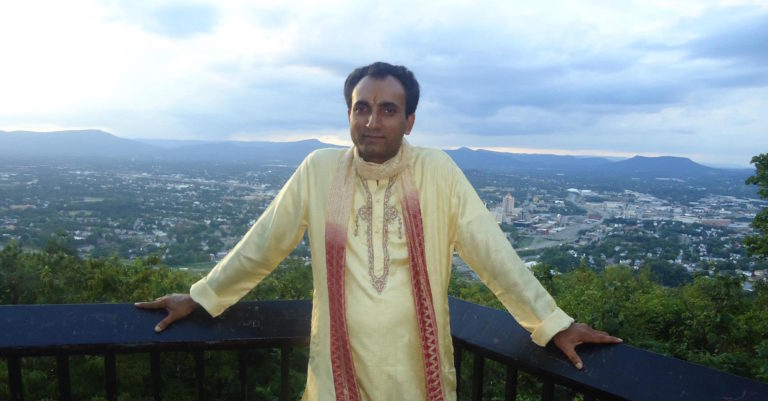
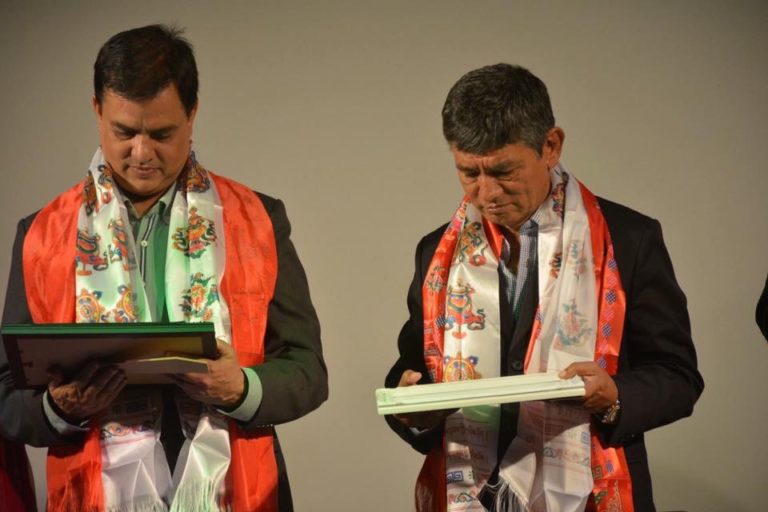






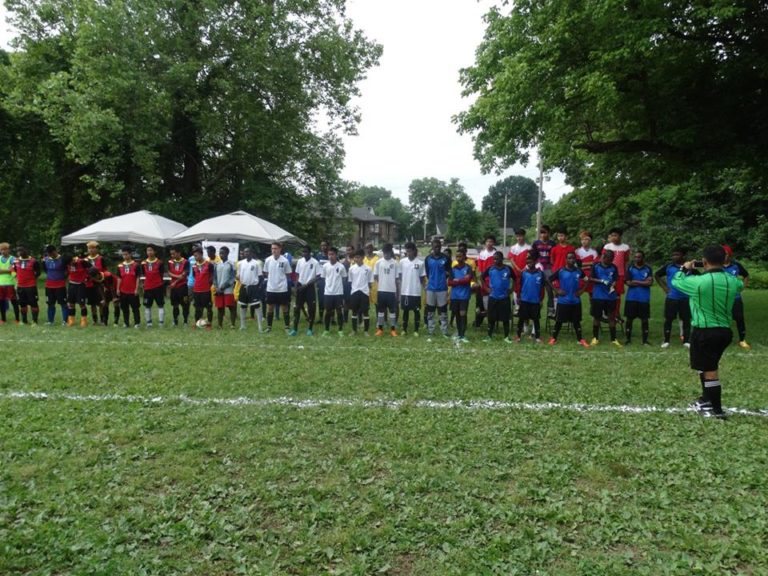







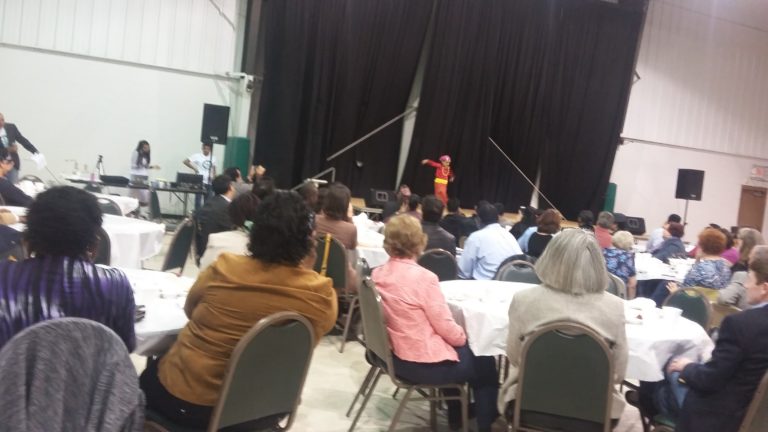





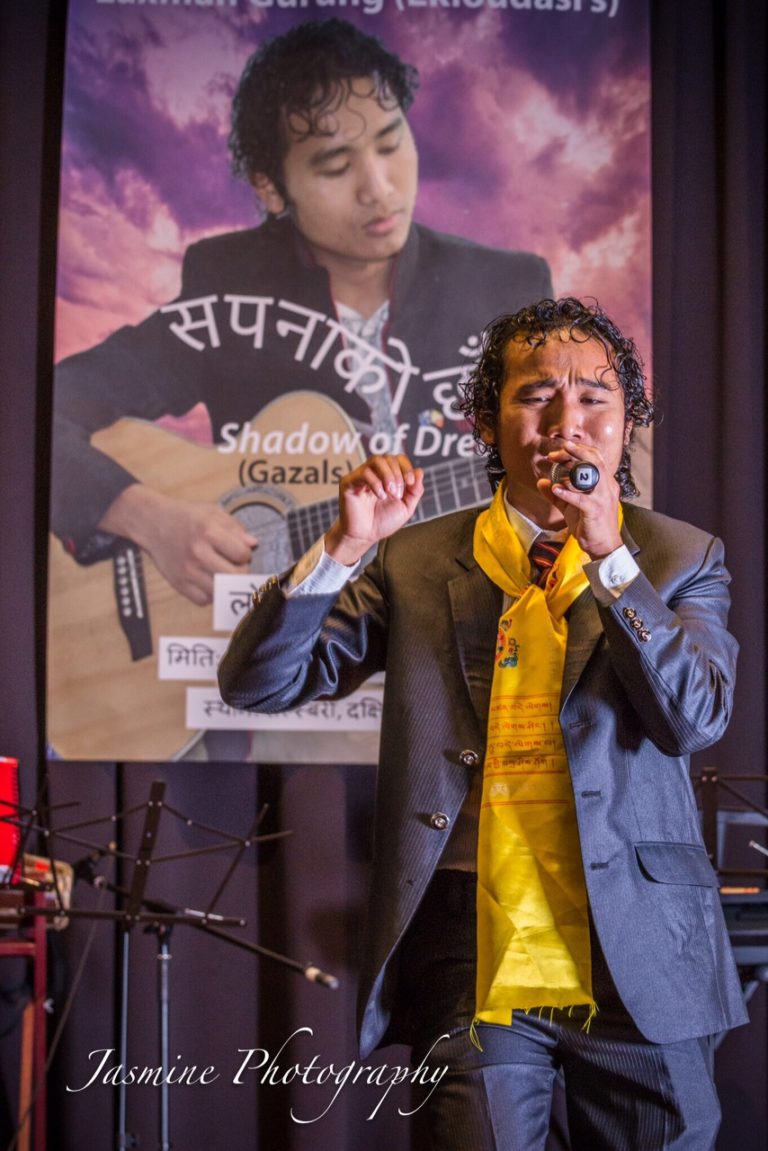




 For many in the Western Buddhist world, Bhutan has become a quasi-mythical land. Bhutan is an officially Buddhist Kingdom with ties to internationally popular Lamas. It has become famous for it’s lauded vision of “gross national happiness”. In 2006, it was named the happiest country in Asia and the sixth happiest in the world in a survey based on the Gross National Happiness index inspired by Bhutan itself. In 2012, as a result of an initiative of the Bhutanese government, the UN named March 20 “The International Day of Happiness”. More recently the environmental media declared Bhutan one of the few countries in the world to be not just carbon neutral but
For many in the Western Buddhist world, Bhutan has become a quasi-mythical land. Bhutan is an officially Buddhist Kingdom with ties to internationally popular Lamas. It has become famous for it’s lauded vision of “gross national happiness”. In 2006, it was named the happiest country in Asia and the sixth happiest in the world in a survey based on the Gross National Happiness index inspired by Bhutan itself. In 2012, as a result of an initiative of the Bhutanese government, the UN named March 20 “The International Day of Happiness”. More recently the environmental media declared Bhutan one of the few countries in the world to be not just carbon neutral but 

